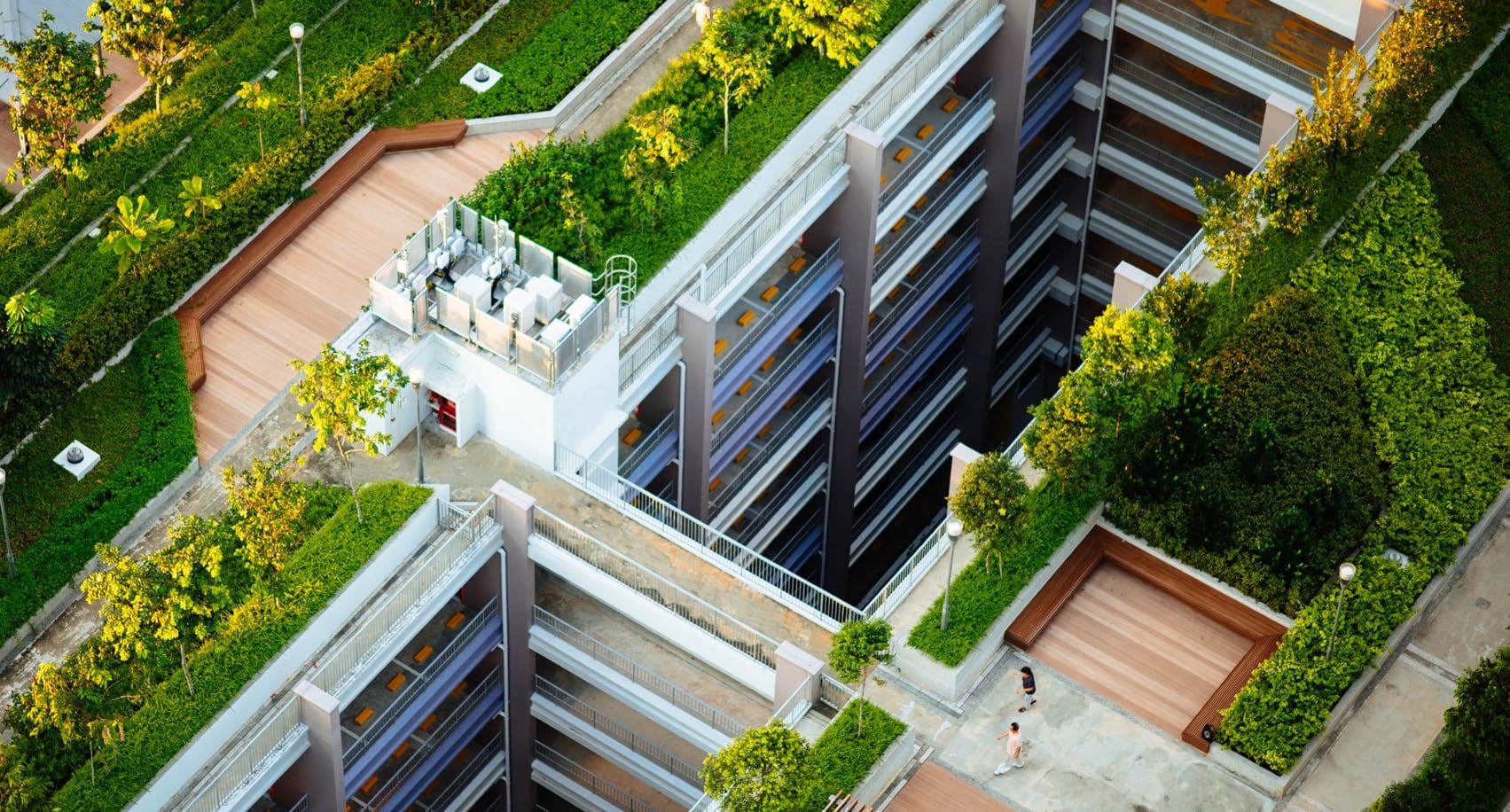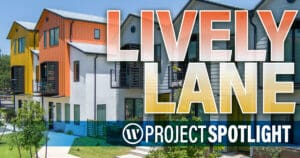
WGI Unleashed Episode 89: Lyndsey Duty, Environmental Scientist
On the latest episode of the WGI Unleashed podcast, we sit down with Lyndsey Duty, one of WGI’s Environmental Scientists based out of our Tampa, FL office!
Learn from award-winning professionals — explore our whitepapers, blogs, and the latest industry updates.
Join our dynamic organization of engineers, land surveyors, landscape architects, environmental scientists, and architects!
Talk to a market leader today! We’ll answer any questions you have about our professional services.

Download this publication as a PDF
Why Growing Cities Are Saying Goodbye to Gray Infrastructure & Embracing a Green Future
WE ALL LIVE DOWNSTREAM
Stormwater management is a common challenge facing urban planners and municipal leaders in cities and counties undergoing rapid growth. As cities grow, the number of impervious surfaces — such as rooftops, parking lots, and roadways — increases. Water potentially contaminated with chemicals, oil, and excess sediment is prevented by these surfaces from percolating into the ground. Instead, the untreated water rushes quickly from storm drains into rivers, creeks, ponds, and other bodies of water. Because unmanaged stormwater can have substantial public health and safety ramifications, federal and state regulations govern the discharge of stormwater in urbanized areas, including small towns and cities.1 As rapid development progresses, a robust stormwater management plan becomes essential.
 Typical gray infrastructure solutions to stormwater management range from channeling water directly into storm drains to the development of regional water-quality ponds and on-site sedimentation filtration systems. These gray solutions are capital-cost intensive, requiring cities to establish large engineering, asset management, and operations and maintenance programs to keep the infrastructure functioning as intended.
Typical gray infrastructure solutions to stormwater management range from channeling water directly into storm drains to the development of regional water-quality ponds and on-site sedimentation filtration systems. These gray solutions are capital-cost intensive, requiring cities to establish large engineering, asset management, and operations and maintenance programs to keep the infrastructure functioning as intended.
For growing municipalities, it’s why the transition from gray to green infrastructure is a needed trend in urban planning and private development. Distributed strategies like rain gardens, rainwater harvesting, irrigation-retention systems, green roofs, bioswales, and porous pavement can help filter storm runoff, site-by-site, minimizing its impact. Green infrastructure strategies can also improve the quality of life for residents and visitors because they can be more aesthetically pleasing than traditional stormwater strategies like sedimentation basins, and capable of using local plants and materials that create of unique sense of place and identity for a growing community. In addition to filtering stormwater, green infrastructure also provides critical ecosystem services such as pollinator habitat, shading, reduced ambient temperatures and urban heat island impacts, and carbon-dioxide removal. In short, green infrastructure is designed and applied to reflect the natural environment while providing water and air quality benefits to the local community.
COSTS AND BENEFITS
As with any design or planning choice, green infrastructure has both costs and benefits. Beginning with the benefits, green infrastructure by design promotes public health and safety, provides for effective localized stormwater management, and benefits local businesses by supporting the economy. Because green infrastructure is distributed across a site and across the watershed, it allows water to soak into the ground mimicking pre-development conditions, The resulting increase in soil moisture content provides extended water availability to plants and regulated local ambient temperatures via evapotranspiration during dry periods.
Green infrastructure also improves the quality of life for the local community. The aesthetics of well-shaded and landscaped spaces can create more appealing places for residents to linger while attracting visitors and businesses to an area. This is beneficial for local businesses, but it’s also a benefit for the city or town as it provides for potential increases in local property values. Higher values translate to a healthier real estate tax base and tax paid for goods and services.
Green infrastructure can also reduce day-to-day costs to citizens, businesses, and the government due to the ecosystem services that well-designed natural spaces provide to the community. For example, shade from tree cover reduces overall cooling costs and lessens the impacts of urban heat islands. This means that citizens spend less to cool their homes, businesses, cars, schools, and government buildings. In urbanizing areas, additional shade also supports public health by helping to mitigate the health impact of dangerous heat waves.
Evaluating the costs, the conventional wisdom is that green infrastructure is less expensive to install than gray infrastructure but more expensive and complicated to maintain. On the face of it, that’s true — but it doesn’t tell the whole story.
Typically, gray infrastructure development entails much higher capital costs. Gutters, drains, pipes, and retention basins are all important types of infrastructure, but they are significantly more costly to build than rain gardens, biofiltration swales, tree cover, and permeable pavements. Often, the high cost associated with gray infrastructure requires cities to take on long-term debt by selling bonds. Or, if financial resources are too limited, cities may be required to cut other essential services to pay for gray infrastructure development.
What’s less well understood are the long-term costs of maintaining green versus gray infrastructure. Conventional wisdom says that green infrastructure is more expensive to maintain than traditional gray infrastructure. After all, when you build infrastructure out of steel and concrete, its useable life is designed to be decades. But maintaining trees, shrubs, and other natural forms of infrastructure requires trained landscape professionals to take care of it throughout the year. This seeming disadvantage can be a benefit when it allows communities to build a skilled green workforce by creating job opportunities that wwfill a local need.
MAKING GREEN INFRASTRUCTURE WORK
Green infrastructure is a relatively new idea for many communities, which may not have the necessary codes and regulations in place to govern its development. Code issues are important for both public spaces — to provide guidance into how to develop green infrastructure — and private development — to regulate how developers implement green strategies that benefit both the development and the community at large.
When developing a framework for green infrastructure codes and regulations, five considerations stand out:
Green infrastructure is a relatively new idea for many communities, which may not have the necessary codes and regulations in place to govern its development. Code issues are important for both public spaces — to provide guidance into how to develop green infrastructure — and private development — to regulate how developers implement green strategies that benefit both the development and the community at large.
LIVABILITY: The green infrastructure must create a more aesthetically pleasing community, promoting public health and safety.
RESILIENCY: The green infrastructure must be able to accommodate a changing climate, withstanding the new normal of repeated major storms, and continuing to operate as intended during and after those storms.
SCALABILITY: As the city or an individual development grows, the green infrastructure must be able to grow with it.
SENSE OF PLACE: The green infrastructure must fit appropriately with the surrounding environs.
The green infrastructure must be designed to last, operating as designed and planned for many years.
It’s important to remember that developing green infrastructure isn’t simply a matter of planting some trees and plants. An effective plan combines a variety of green infrastructure strategies that could include green roofs, rain gardens, bioswales and biofiltration swales, tree cover and other types of vegetation, and permeable pavements to manage stormwater in a way that meets federal regulatory requirements. Codes and regulations must provide the necessary guidance to create functional green infrastructure.
The most effective green infrastructure programs also have a public education and engagement element. For some, experiencing “wild” areas of native grasses and plants within the urban context can create fear of mosquitoes, snakes, and other undesirable elements. That’s why successful programs should plan for a public education budget that clearly demonstrates the financial, public health, and economic benefits of green infrastructure while creating a channel for citizens to report any needed maintenance issues as they occur. These programs can help foster a community investment in biodiversity and encourage citizen involvement in the preservation and stewardship of these public assets.
Cities can promote green development in two ways to private development: codified requirements and incentives. A combination of both can often provide the best results by requiring the most important forms of green infrastructure while encouraging more “elective” strategies with grants, rebates, and tax credit programs. Municipal leaders must remember that these incentive programs aren’t just feel-good offerings — they are investments. They increase local property values and attract new residents and businesses, resulting in new tax revenues.
HOW WGI CAN HELP
Given that green infrastructure planning, design, and development is a relatively new concept for cities, many do not have one. codes and regulations in place or the experienced staff to develop them. Others may have codes that aren’t working as intended. WGI’s landscape architecture professionals are experts at effective code and regulation development for green infrastructure. Our team has a combination of public and private-sector experience that can help any city or county create effective, resource-efficient codes and regulations.
WGI’s landscape experts can also help public and private organizations create green infrastructure designs that will adhere to—and even exceed—local codes and provide attractive, cost-effective solutions. Realizing that applied green infrastructure is dependent upon long-term care, our experts ensure the maintenance and asset management are considered throughout the design process and can provide specifications and written guidance for maintenance staff.
WGI’s team can also create maintenance and asset management programs to keep green infrastructure elements operating cost-effectively.
It’s not enough to implement green infrastructure; you need to do it right and in a way that will operate effectively over time.

WGI is a national design and professional services firm leading in technology-based solutions for the construction of public infrastructure and real estate development. At WGI, we’re providing Tomorrow’s Infrastructure Solutions Today.

On the latest episode of the WGI Unleashed podcast, we sit down with Lyndsey Duty, one of WGI’s Environmental Scientists based out of our Tampa, FL office!

WGI’s San Antonio team laced up their running shoes and braved the rain to take on the iconic Rock and Roll 5K – Discover how they turned challenges into triumphs in this memorable event recap!

With a legacy of supporting, empowering, & inspiring women in transportation, the WTS Central Florida’s Annual Awards & Scholarship Banquet was nothing short of a night to remember.

Discover how Austin is transforming urban development with proposed zoning changes, inclusive housing initiatives, and creative space preservation—all while embracing growth and sustainability.

Texas Medical Center made $78M from parking last year. Why haven’t its busiest garages been upgraded in years?

Discover how WGI helped bring Lively Lane to life—a vibrant community in San Marcos that blends sustainable design, live/work townhomes, and natural beauty to create the perfect balance of urban convenience and serenity.
You’ve been searching for a place like WGI. We look forward to meeting you soon.
Sign up to receive emails to hear our latest news and achievements in our monthly newsletter.
Enter your zip code, and we’ll personalize your experience with local projects, office locations, team members, and more.
WGI supports its associates with meaningful opportunities for growth, strong benefits and perks, while we work collaboratively with clients and co-consultants to shape and improve communities.






WGI is a dynamic organization with opportunities nationwide for engineers, land surveyors, landscape architects, environmental scientists, and architects.